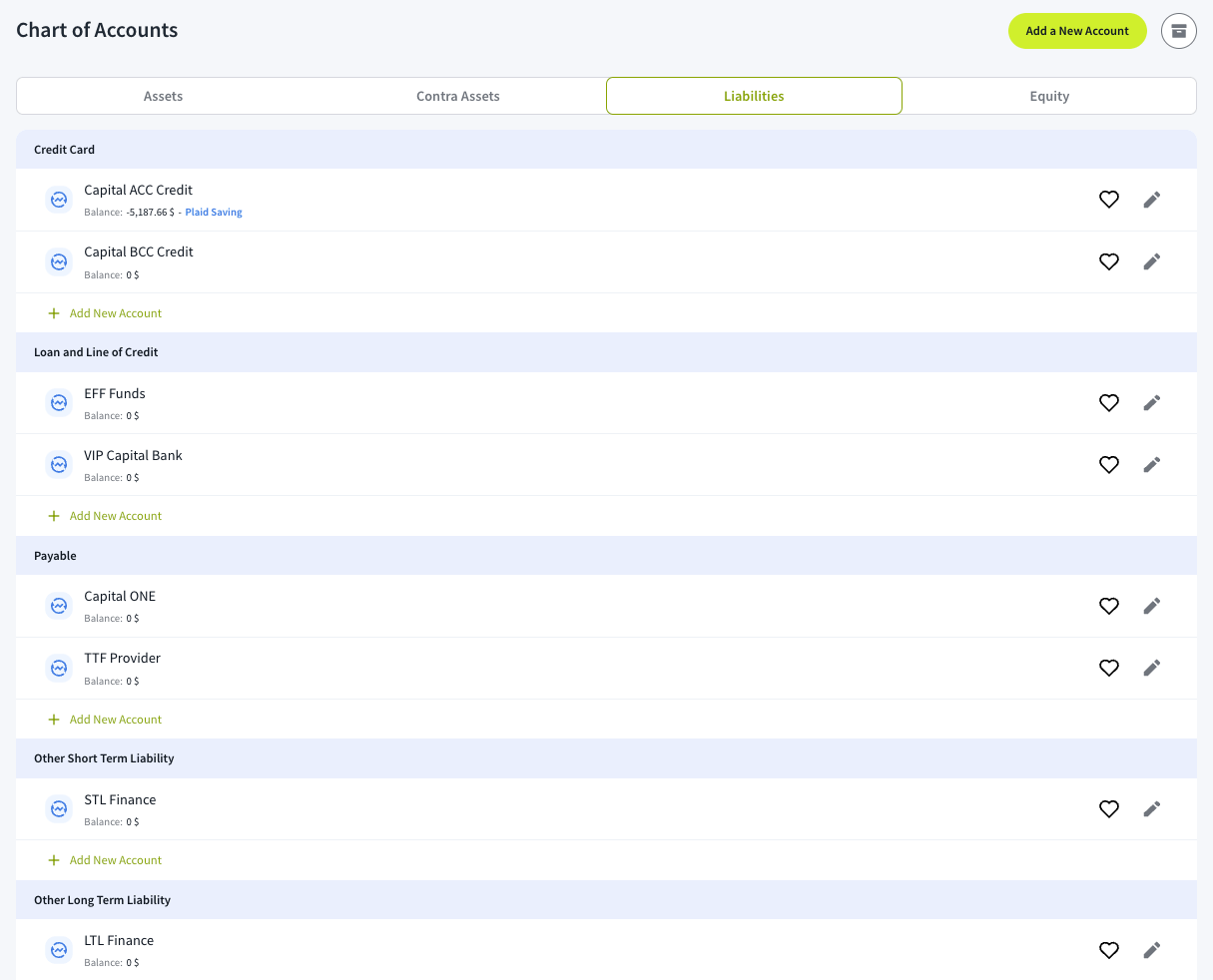Tip: Start typing in the input box for immediate search results.
Liabilities
Liabilities represent the financial obligations or debts a business or individual owes to others. These can include loans, credit card balances, accounts payable, and other obligations that need to be settled in the future. Liabilities are typically classified as short-term (due within a year) or long-term (due over a longer period).

Categories in the Liabilities Tab
The Liabilities tab in your Chart of Accounts includes the following categories:
Credit Card
- This section tracks credit card accounts used for business or personal expenses.
- Example: A company credit card with a balance of credit card account.
Loan and Line of Credit
- Includes borrowed funds from banks, financial institutions, or other lenders.
- Example: A business loan for office expansion or a line of credit used for cash flow.
Payable
- Tracks outstanding payments owed to suppliers, vendors, or service providers.
- Example: Unpaid supplier invoices or bills for operational expenses.
Other Short-Term Liabilities
- Any other financial obligations that must be settled within one year.
- Example: Taxes payable or wages payable.
Other Long-Term Liabilities
- Debts and obligations that extend beyond one year.
- Example: A long-term mortgage loan for office space.
Tutorial: How to Add a New Account in the Liabilities Tab
Adding a new account in the Liabilities tab follows the same steps as in the Assets tab. However, the key difference is selecting the appropriate Account Type from the Liabilities category list. Ensure you choose the correct type to accurately track depreciation and offsets to liability accounts.

